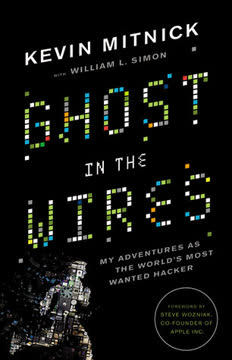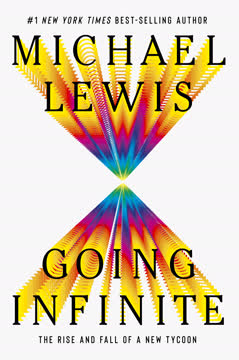Key Takeaways
1. Curiosity is innate: Babies are natural learners from birth
"From their very first moments on Earth, babies get bored."
Innate drive to learn. Babies are born with an inherent curiosity and desire to understand the world around them. From a young age, they engage in systematic exploration of their environment, using all their senses to gather information and make sense of new experiences.
Joy of discovery. Infants show delight in figuring things out for themselves, as evidenced by their "vigorous smiling and cooing" when they learn to control their environment. This intrinsic motivation to learn and explore persists throughout childhood, driving children to ask endless questions and seek out new challenges.
- Examples of baby learning:
- Distinguishing faces and expressions
- Understanding basic physics (e.g., object permanence)
- Acquiring language skills
- Developing problem-solving abilities (e.g., using tools to reach objects)
2. Traditional schooling stifles curiosity and creativity
"Fear makes you dumb."
Classroom environment. Traditional schools often create an atmosphere of fear and anxiety, where students are more concerned with avoiding embarrassment or punishment than with genuine learning. This fear-based approach inhibits critical thinking and creativity.
Passive learning model. The typical classroom setup, with students sitting quietly and listening to lectures, fails to engage children's natural curiosity and desire for hands-on exploration. This passive model of education is at odds with how humans naturally learn and process information.
- Negative impacts of traditional schooling:
- Reduced intrinsic motivation to learn
- Decreased creativity and original thinking
- Heightened anxiety and stress
- Focus on memorization rather than understanding
- Loss of joy in learning and discovery
3. Schools prioritize obedience over genuine learning
"Schools exist to give people an education, companies exist to make things people want, elections exist to give people a voice in how the system is run, newspapers exist to tell us what's going on. That's just how the world works."
Hidden agenda. While schools claim to be about education, their primary function is often to instill obedience and conformity. This hidden curriculum prepares students for a life of following orders and accepting authority without question.
Disconnect from real learning. The emphasis on rule-following and standardized procedures often comes at the expense of genuine understanding and critical thinking. Students learn to navigate the system rather than engage deeply with the subject matter.
- Examples of prioritizing obedience:
- Rigid schedules and bell systems
- Emphasis on following directions exactly
- Punishments for questioning authority
- Rewards for compliant behavior
- Limited opportunities for self-directed learning
4. Standardized testing fails to measure true understanding
"Students, of course, were not tested on how well they actually understood basic concepts but simply on how well they could answer the standard multiple-choice tests."
Shallow measurement. Standardized tests often assess superficial knowledge rather than deep understanding. They reward memorization and test-taking strategies over genuine comprehension and critical thinking skills.
Narrowed curriculum. The pressure to perform well on standardized tests leads schools to focus heavily on test preparation, often at the expense of broader learning experiences. Subjects not covered on tests, such as art, music, and physical education, are frequently reduced or eliminated.
- Problems with standardized testing:
- Encourages teaching to the test
- Fails to measure creativity and problem-solving skills
- Creates high-stress environments for students and teachers
- Narrows the curriculum to focus on tested subjects
- Perpetuates inequalities in education
5. The hidden curriculum: Schools prepare workers, not thinkers
"Schools are places where kids must show up every day at 8 a.m. for years on end, sit at uncomfortable desks under fluorescent lighting with a group of relative strangers, and obey arbitrary instructions from their superiors about the appropriate way to carry out repetitive intellectual assignments."
Workplace preparation. The structure and rules of traditional schooling closely mirror those of typical workplaces, suggesting that schools are designed more to create compliant workers than independent thinkers.
Emphasis on conformity. Schools reward behaviors such as punctuality, obedience, and the ability to complete repetitive tasks without complaint – skills valued more in industrial settings than in creative or intellectual pursuits.
- Elements of the hidden curriculum:
- Rigid schedules and time management
- Hierarchical authority structures
- Emphasis on following directions without question
- Rewards for conformity and compliance
- Limited opportunities for creativity and self-expression
6. The historical roots of schooling lie in industrial control
"As factories marched across the country, public schools followed."
Industrial origins. The modern school system was largely developed during the Industrial Revolution, with the goal of creating a disciplined and compliant workforce for factories and other industrial enterprises.
Social control. Early proponents of universal schooling often explicitly stated their intentions to use education as a means of maintaining social order and preventing labor unrest. This agenda shaped the structure and methods of schooling that persist to this day.
- Key historical developments:
- Rise of factory-style schools in industrial centers
- Compulsory education laws
- Standardization of curriculum and teaching methods
- Introduction of age-based grade levels
- Development of "scientific management" in education
7. Modern education reforms perpetuate the same flawed system
"Today, it seems like everyone agrees that what we need are more rigorous schools."
Superficial changes. Despite frequent calls for education reform, most proposed changes focus on intensifying existing practices (e.g., more testing, longer school days) rather than fundamentally rethinking the purpose and structure of education.
Continued emphasis on control. Modern reforms often reinforce the idea that the primary goal of education is to produce compliant, productive workers rather than fostering critical thinking and creativity.
- Examples of misguided reforms:
- Increased standardized testing
- Longer school days and years
- Stricter disciplinary policies
- Narrower focus on "core" subjects
- Technology integration without pedagogical change
8. Unschooling offers an alternative approach to learning
"Unschooling is a phenomenon that is still relatively small, but steadily growing."
Child-led learning. Unschooling is an educational philosophy that trusts children's natural curiosity and allows them to pursue their interests without a formal curriculum or structure.
Holistic development. This approach emphasizes learning through real-world experiences, fostering not just academic skills but also creativity, critical thinking, and social-emotional development.
- Key principles of unschooling:
- Learning is driven by the child's interests and questions
- Education occurs through everyday life experiences
- No formal curriculum or testing
- Parents act as facilitators rather than instructors
- Emphasis on intrinsic motivation and self-directed learning
Last updated:
FAQ
What's The Boy Who Could Change the World about?
- Collection of Writings: The book is a compilation of Aaron Swartz's writings, showcasing his thoughts on technology, politics, and activism.
- Diverse Topics: It covers a range of subjects, including copyright issues, open access to information, and critiques of political systems.
- Legacy and Influence: The book highlights Swartz's impact on the digital landscape and his advocacy for a more equitable society.
Why should I read The Boy Who Could Change the World?
- Inspiration from a Visionary: Swartz's passion for social justice and technology is inspiring and encourages readers to take action.
- Understanding Digital Rights: The book delves into critical discussions about copyright, intellectual property, and digital access.
- Call to Action: Swartz's writings encourage readers to reflect on their roles in society and the importance of activism.
What are the key takeaways of The Boy Who Could Change the World?
- Free Culture Advocacy: Swartz emphasizes the importance of free access to information and the need for reform in copyright laws.
- Power of Collaboration: He illustrates how mass collaboration can democratize knowledge and empower individuals.
- Critique of Political Systems: Swartz argues for active engagement and organizing against entrenched power for true change.
What are the best quotes from The Boy Who Could Change the World and what do they mean?
- "Information is power.": This underscores the idea that knowledge should be freely shared to benefit society.
- "There is no justice in following unjust laws.": It encourages readers to question the legality of laws that infringe on rights.
- "Curiosity is the engine of learning.": Advocates for educational systems that prioritize curiosity over compliance.
How did Aaron Swartz contribute to the free culture movement?
- Early Involvement: Swartz was involved in developing key technologies like RSS and Creative Commons.
- Activism Against Copyright Laws: He campaigned against restrictive copyright laws, exemplified by his participation in the PACER case.
- Guerilla Open Access Manifesto: This manifesto called for civil disobedience against unjust copyright laws.
What is the significance of the Guerilla Open Access Manifesto in The Boy Who Could Change the World?
- Call for Action: The manifesto serves as a rallying cry for activists to challenge the status quo of information access.
- Legal and Ethical Implications: It raises questions about the legality of laws that restrict knowledge sharing.
- Influence on Open Access Movement: The manifesto has inspired many to advocate for free access to academic research and information.
How did Swartz view the relationship between technology and social justice?
- Technology as a Tool: Swartz believed technology could promote social justice and empower marginalized communities.
- Critique of Technological Determinism: He argued that active engagement and organizing were necessary to achieve justice.
- Integration of Activism and Technology: Swartz demonstrated how technology could challenge oppressive systems and advocate for equity.
What challenges did Aaron Swartz face in his activism?
- Legal Troubles: Swartz faced significant legal challenges, particularly related to his downloading of academic articles from JSTOR.
- Mental Health Struggles: His activism took a toll on his mental health, highlighting the emotional burden activists often face.
- Isolation in Advocacy: Despite his influence, Swartz often felt isolated in his beliefs and faced pushback from various sectors.
How does Aaron Swartz view the education system in The Boy Who Could Change the World?
- Critique of Traditional Education: Swartz criticizes the system for stifling creativity and curiosity.
- Unschooling Philosophy: He advocates for unschooling, allowing children to learn at their own pace and follow their interests.
- Fear and Boredom: Swartz emphasizes the need for educational environments that support exploration and self-directed learning.
What is Swartz's perspective on capitalism in The Boy Who Could Change the World?
- Critique of Capitalism: Swartz critiques capitalism for creating inequality and prioritizing profit over people.
- Call for Economic Justice: He advocates for economic systems that promote fairness and equity.
- Meritocracy's Flaws: Swartz highlights the flaws of meritocracy, arguing it can perpetuate inequality.
How does The Boy Who Could Change the World address the role of technology?
- Empowerment through Technology: Swartz views technology as a tool for empowerment and social change.
- Open Access Advocacy: He emphasizes the importance of fighting against censorship and promoting digital rights.
- Critique of Corporate Control: Swartz warns against the dangers of monopolies and surveillance in the digital landscape.
What impact did Aaron Swartz hope to achieve through his writings in The Boy Who Could Change the World?
- Inspire Change: Swartz aimed to inspire readers to take action and engage in activism.
- Raise Awareness: He sought to raise awareness about important social and political issues, particularly related to technology.
- Create a Legacy: Swartz hoped to leave a lasting impact, encouraging future generations to continue the fight for justice and equality.
Review Summary
The Boy Who Could Change the World collects Aaron Swartz's writings, showcasing his brilliance and wide-ranging interests. Reviewers praise his insightful commentary on technology, politics, education, and culture. Many find his early works particularly impressive, given his young age. While some criticize the book's organization and dated content, most appreciate Swartz's clear vision and passion for free information. Readers are often moved by his idealism and saddened by his untimely death, viewing the book as a testament to a gifted mind lost too soon.
Similar Books










Download PDF
Download EPUB
.epub digital book format is ideal for reading ebooks on phones, tablets, and e-readers.




